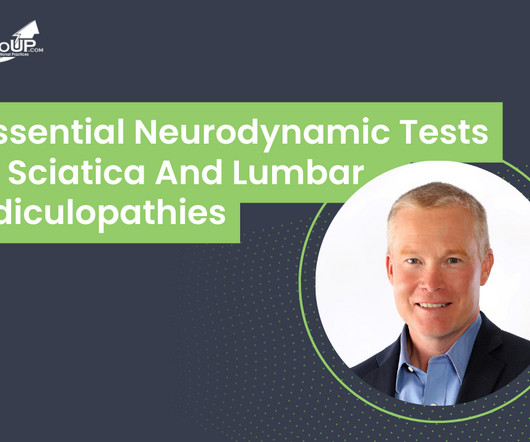7 Essential Neurodynamic Tests For Sciatica And Lumbar Radiculopathies
ChiroUp
MAY 31, 2024
10) The crossed femoral nerve stretch test may be a valuable screening test supporting a diagnosis of upper lumbar radiculopathy. (12) Use of neurodynamic or orthopedic tension tests for the diagnosis of lumbar and lumbosacral radiculopathies: study of the diagnostic validity. Elsevier Health Sciences; 2005 May 6. Shacklock M.










Let's personalize your content